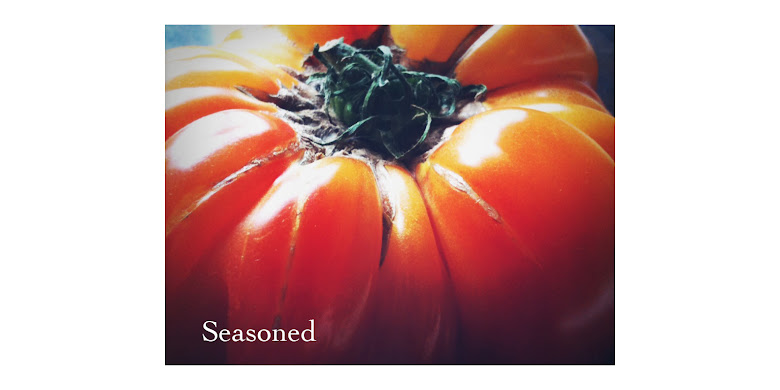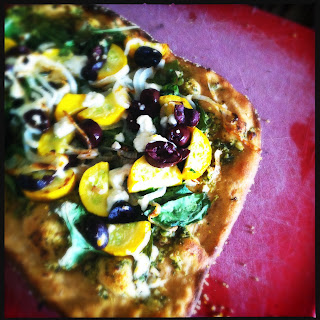Now, I love my family and I am so grateful that the timing worked out for me to spend my last week with them, but I need to be frank about something: I also love their oven. I love that it takes five minutes to preheat, that food cooks evenly, that the oven temperature does not jump from 350 to 550 F with no warning. It’s pretty magical.
So, needless to say, for me coming home means it’s time to bake. Most trips I only have time to make a quick batch of granola, but since this time I found myself at home for one week with no agenda, I have been keeping pretty busy.
This was my second time making these empanadas, and I’d say this round was considerably more successful than the first. I switched the flour used as the base for the dough, and I think this change, coupled with being baked in better oven, made all the difference.
Try not to be intimidated by the length of the recipe, as the individual steps are really very simple. Although this might not be the best choice for a weeknight meal, it is most definitely worth your time on a lazy weekend day. And, I’m pretty sure that making and sharing these empanadas earns you some serious bonus points with your lucky friends or family. High fives all around.
Empanadas
Adapted from The First Mess
Makes 8 empanadas
Note: Feel free to substitute the whole wheat pastry flour with other whole grain/gluten-free flours you have on hand. The original recipe calls for chickpea flour, and I imagine spelt might be a good choice, as well. If you experiment, start with less water than called for in this recipe and add more to the dough as needed. The dough should be slightly sticky, dense and easy to handle, but not at all dry. Also, adjust the filling ingredients to reflect current seasonal produce or what you have on hand, but just make sure that you end up with about 2 cups total filling (after cooking).
I also included the recipe for the green creamy sauce you see in the pictures, even though I did not make any adjustments to the original recipe. Yes, it is vegan, but trust me when I say that plenty of very non-vegan friends and family have been asking for this recipe since I made it the other day. Follow the link to the original recipe for a great tomatillo salsa recipe, as well (also in the pictures)!
Dough:
3 cups whole wheat pastry flour
4 ½ Tbsp olive oil
⅔- ¾ cup water (the original recipe called for much less water, so start small and add more as needed)
pinch of salt
Filling:
2 small beets, peeled and finely chopped
1 carrot, washed and finely chopped
6-7 large leaves of beet greens, kale, chard, or other leafy greens
1 clove garlic, minced
½ cup cooked black beans, drained
¼ tsp cinnamon
1 tsp oregano
1 tsp cumin
½ tsp cayenne pepper (or less of you want the mixture less spicy)
pinch of red pepper flakes (optional)
salt and pepper to taste
splash of olive oil (or cooking oil of choice)
Preheat the oven to 350 F, and line a large baking sheet with parchment paper.
Start by making the dough. In a large bowl, combine the flour and salt. Add the olive oil, and mix in ½ cup of water (you may need to start using your hands at this point). Knead the dough in the bowl, and continue to add water (1 tablespoon at a time) until the dough comes together into a slightly sticky, cohesive ball (it will be very dense). Lightly flour a countertop or cutting board and transfer your dough onto it. Knead a couple more times to form a smooth ball, then press it down into a disk. Wrap the dough in plastic wrap and set aside while you make the filling.
Heat a large skillet with a bit of oil over medium-low heat, then add the beets and carrots. Cook until the vegetables begin to soften (about ten minutes), stirring occasionally. Stir in the garlic and spices, and cook for about one minute more. Add in the beet greens and beans, cooking just until the greens start to wilt. Taste for salt and pepper and season to your liking.
On a lightly floured surface, unwrap the dough and cut into 8 equal pieces. Working with one piece at a time (keep the others covered with a damp towel), form the dough into a smooth ball and roll out to about ¼ inch thickness, taking care not to tear the dough. Place ¼ cup of the filling mixture a bit off-center on the dough circle. Fold one side of dough over the top of the filling to just barely meet the other side. Actually, it’s best to leave a small crescent shape when you fold the dough in half, since you want to have enough dough to work with when crimping up the edges. Then, use your fingers to roll the bottom lip of the dough up and over the seam from the top half (this is where you make the crinkly edge), sealing the empanada shut. Place finished empanada on the lined baking sheet and repeat this process with the rest of the dough.
Brush the tops of the empanadas with a bit of olive oil (optional) and bake for 20-25 minutes, or until the bottoms begin to turn brown.
Poblano Cashew Crema
From Love and Lemons
1 ½ cups cashews, soaked in water for at least 30 minutes, then drained
1 medium to large poblano (sometimes called pasilla) pepper
¼ cup onion, chopped
1 clove garlic, minced
3-4 Tbsp lemon juice
¾ cup water
salt to taste (don’t hold back here!)
Roast the pepper under the broiler for about 20 minutes, turning every 5 minutes or so. The pepper should be blistered when it’s done, so adjust your timing accordingly. After removing from the oven, immediately place the pepper in a small bowl, cover with a dish towel, and allow to cool for about 15 minutes. Once cool, peel the skin off the pepper, remove the seeds and stem, then place in your food processor with the other dry ingredients. Add 3 tablespoons of the lemon juice and ½ cup of water. Turn the machine on and allow to process for a minute or so, adding more water until the sauce is creamy (but not watery). Once the sauce is smooth, taste to see if more salt or lemon juice is needed.
Store in the refrigerator for a few days and serve with everything.



























